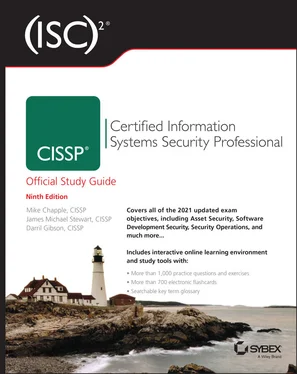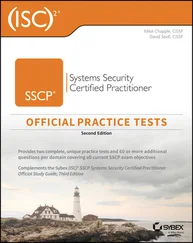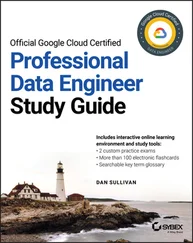Statement of Urgency and Timing
The statement of urgency and timing expresses the criticality of implementing the BCP and outlines the implementation timetable decided on by the BCP team and agreed to by upper management. The wording of this statement will depend on the actual urgency assigned to the BCP process by your organization's leadership. Consider including a detailed implementation timeline to foster a sense of urgency.
The risk assessment portion of the BCP documentation essentially recaps the decision making process undertaken during the business impact analysis. It should include a discussion of all the critical business functions considered during the BIA as well as the quantitative and qualitative analyses performed to assess the risks to those functions. Include the actual AV, EF, ARO, SLE, and ALE figures in the quantitative analysis. Also, describe the thought process behind the analysis to the reader. Finally, keep in mind that the assessment reflects a point-in-time evaluation, and the team must update it regularly to reflect changing conditions.
Risk Acceptance/Mitigation
The risk acceptance/mitigation section of the BCP documentation contains the outcome of the strategy development portion of the BCP process. It should cover each risk identified in the risk analysis portion of the document and outline one of two thought processes:
For risks that were deemed acceptable, it should outline the reasons the risk was considered acceptable as well as potential future events that might warrant a reconsideration of this determination.
For risks that were deemed unacceptable, it should outline the risk management provisions and processes put into place to reduce the risk to the organization's continued viability.
 It's far too easy to look at a difficult risk mitigation challenge and say, “We accept this risk” before moving on to less difficult things. Business continuity planners should resist these statements and ask business leaders to document their risk acceptance decisions formally. If auditors later scrutinize your business continuity plan, they will most certainly look for formal artifacts of any risk acceptance decisions made in the BCP process.
It's far too easy to look at a difficult risk mitigation challenge and say, “We accept this risk” before moving on to less difficult things. Business continuity planners should resist these statements and ask business leaders to document their risk acceptance decisions formally. If auditors later scrutinize your business continuity plan, they will most certainly look for formal artifacts of any risk acceptance decisions made in the BCP process.
The BCP documentation should also outline a vital records program for the organization. This document states where critical business records will be stored and the procedures for making and storing backup copies of those records.
One of the biggest challenges in implementing a vital records program is often identifying the essential records in the first place. As many organizations transitioned from paper-based to digital workflows, they often lost the rigor that existed around creating and maintaining formal file structures. Vital records may now be distributed among a wide variety of IT systems and cloud services. Some may be stored on central servers accessible to groups, whereas others may be located in digital repositories assigned to an individual employee.
If that messy state of affairs sounds like your current reality, you may want to begin your vital records program by identifying the records that are truly critical to your business. Sit down with functional leaders and ask, “If we needed to rebuild our organization today in a completely new location without access to any of our computers or files, what records would you need?” Asking the question in this way forces the team to visualize the actual process of re-creating operations and, as they walk through the steps in their minds, will produce an inventory of the organization's vital records. This inventory may evolve as people remember other important information sources, so you should consider using multiple conversations to finalize it.
Once you've identified the records that your organization considers vital, the next task is a formidable one: find them! You should be able to identify the storage locations for each document identified in your vital records inventory. Once you've completed this task, you can then use this vital records inventory to inform the rest of your business continuity planning efforts.
Emergency Response Guidelines
The emergency response guidelines outline the organizational and individual responsibilities for immediate response to an emergency. This document provides the first employees to detect an emergency with the steps they should take to activate provisions of the BCP that do not start automatically. These guidelines should include the following:
Immediate response procedures (security and safety procedures, fire suppression procedures, notification of appropriate emergency-response agencies, etc.)
A list of the individuals to notify of the incident (executives, BCP team members, etc.)
Secondary response procedures that first responders should take while waiting for the BCP team to assemble
Your guidelines should be easily accessible to everyone in the organization who may be among the first responders to a crisis incident. Any time a disruption strikes, time is of the essence. Slowdowns in activating your business continuity procedures may result in undesirable downtime for your business operations.
The BCP documentation and the plan itself must be living documents. Every organization encounters nearly constant change, and this dynamic nature ensures that the business's continuity requirements will also evolve. The BCP team should not disband after the plan is developed but should still meet periodically to discuss the plan and review the results of plan tests to ensure that it continues to meet organizational needs.
Minor changes to the plan do not require conducting the full BCP development process from scratch; the BCP team may make them at an informal meeting by unanimous consent. However, keep in mind that drastic changes in an organization's mission or resources may require going back to the BCP drawing board and beginning again.
Any time you make a change to the BCP, you must practice reasonable version control. All older versions of the BCP should be physically destroyed and replaced by the most current version so that no confusion exists as to the correct implementation of the BCP.
It is also a good practice to include BCP components in job descriptions to ensure that the BCP remains fresh and to increase the likelihood that team members carry out their BCP responsibilities correctly. Including BCP responsibilities in an employee's job description also makes them fair game for the performance review process.
The BCP documentation should also outline a formalized exercise program to ensure that the plan remains current. Exercises also verify that team members receive adequate training to perform their duties in the event of a disaster. The testing process is quite similar to that used for the disaster recovery plan, so we'll reserve the discussion of the specific test types for Chapter 18.
Every organization dependent on technological resources for its survival should have a comprehensive business continuity plan in place to ensure the sustained viability of the organization when emergencies take place. Several important concepts underlie solid business continuity planning practices, including project scope and planning, business impact analysis, continuity planning, and approval and implementation.
Every organization must have plans and procedures in place to help mitigate the effects a disaster has on continuing operations and to speed the return to normal operations. To determine the risks to your critical business functions that require mitigation, you must work with a cross-functional team to conduct a business impact analysis from both quantitative and qualitative points of view. You must take the appropriate steps in developing a continuity strategy for your organization and know what to do to weather future disasters.
Читать дальше

 It's far too easy to look at a difficult risk mitigation challenge and say, “We accept this risk” before moving on to less difficult things. Business continuity planners should resist these statements and ask business leaders to document their risk acceptance decisions formally. If auditors later scrutinize your business continuity plan, they will most certainly look for formal artifacts of any risk acceptance decisions made in the BCP process.
It's far too easy to look at a difficult risk mitigation challenge and say, “We accept this risk” before moving on to less difficult things. Business continuity planners should resist these statements and ask business leaders to document their risk acceptance decisions formally. If auditors later scrutinize your business continuity plan, they will most certainly look for formal artifacts of any risk acceptance decisions made in the BCP process.










